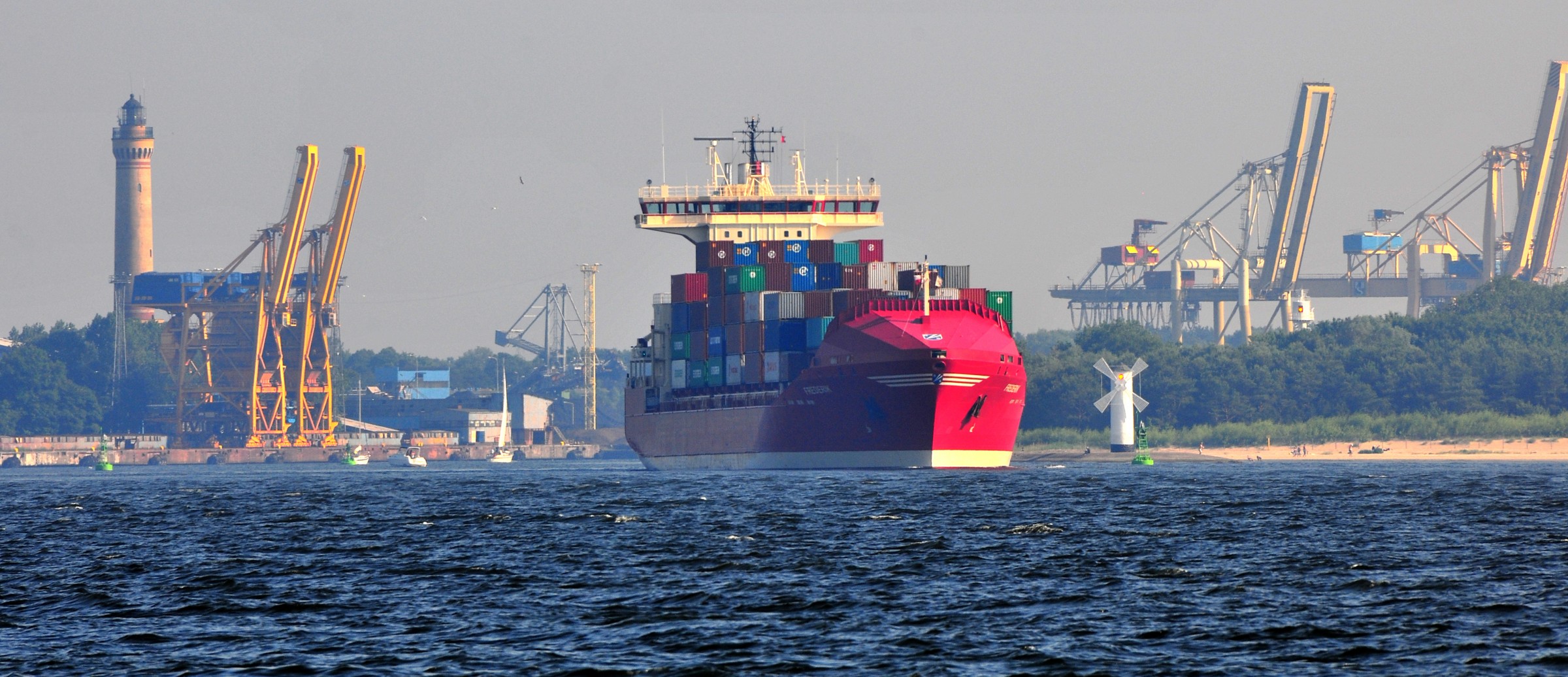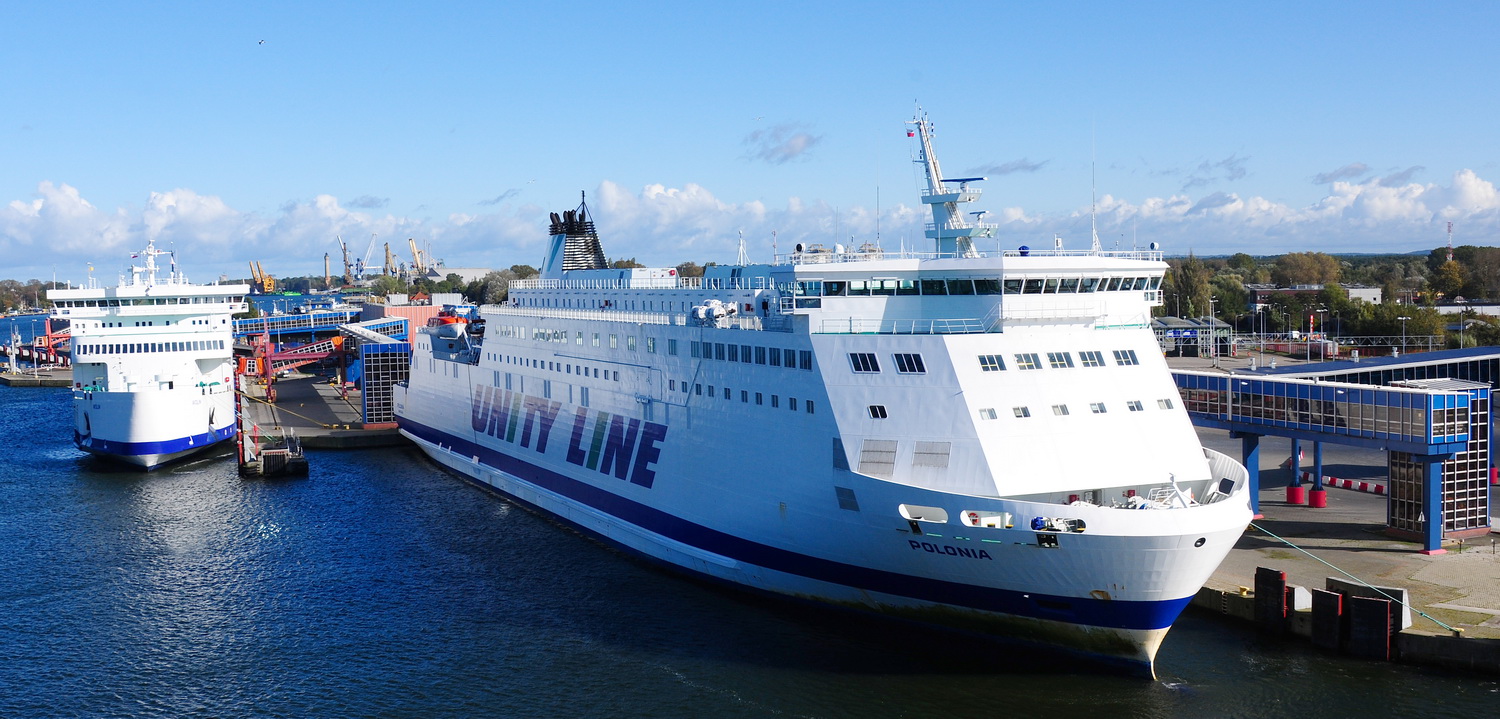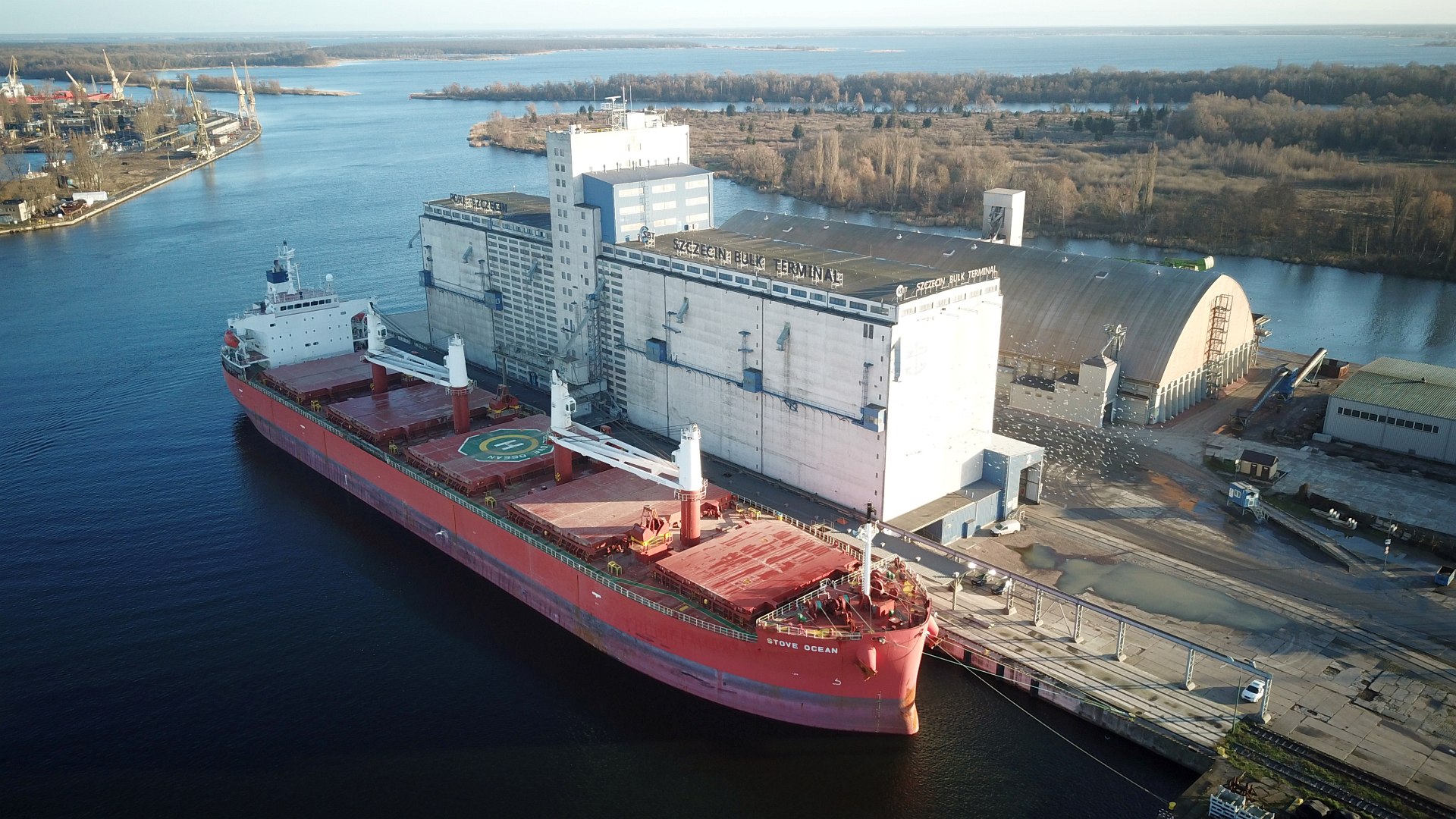30 September 2021
This month ESPO takes you to Poland, and more precisely to the Ports of Szczecin and Świnoujście, with Mr Krzysztof Urbaś, the President of the Szczecin and Świnoujście Seaports Authority. In what follows, discover more about the main investment projects in the ports of Szczecin and Świnoujście, their environmental priorities, their relationship with the local community, and much more.

Can you briefly tell us more about the Port of Szczecin-Świnoujście? What are its main characteristics and challenges?
The Port of Szczecin-Świnoujście is a dynamically developing port complex of the southern Baltic. It is a core port of the TEN-T network and, as the only one in Poland, has access to European channels of inland waterway transport. Thanks to its universal offer, it provides comprehensive services for both bulk and general cargo as well as ferry traffic, annually handling over 30 million tons. In Świnoujście, in the southern part of the port, the ferry terminal is a leader in terms of ferry connections with Scandinavia. In the port of Świnoujście there is also a terminal dedicated to servicing mainly dry bulk cargo. The northern part of this port is an external port with infrastructure for servicing LNG carrier ships. The port in Szczecin handles both general and bulk cargo – dry and liquid. The ports also offer reloading and storage services for agri-food products.
The Port of Szczecin-Świnoujście is an excellent location to invest in maritime cargo handling. It provides investment lands for long-term lease at preferential rates, offering ideal conditions for investors to develop and operate their loading and storage terminals, logistics and develop port industry. For several years, the Szczecin-Świnoujście port complex has also been one of the largest investors in the region, successfully using EU funds. The value of investments related to the development of both ports over the period 2007-2020 will reach the value of nearly EUR 500 million.
What is your long-term vision for the Port of Szczecin - Świnoujście? What are the main investment projects for the coming years?
While defining the vision of the Company, the Development Strategy as well as the Development Programme up to 2030 determined long-term goals, whereas values distinguishing the two ports are defined in the mission. Thus, our vision is the following: Szczecin and Świnoujście – leading ports in the South Baltic Sea, and our mission is creating conditions supporting the development of the ports of Szczecin and Świnoujście as the most universal port complex in the South Baltic Sea.
Investments in the ports of Szczecin and Świnoujście focus on enhancing the competitiveness of the ports and on improving their infrastructure capacity, as well as greenfield development of port operations. A key goal underlying the development of both ports is the improvement of the land and sea accessibility. Since the transport access is going to improve for sea-going vessels, the Port of Szczecin has to adjust its quays to service larger ships. Sea access improvement plans in Szczecin include the following investment projects: upgrading of the Świnoujście-Szczecin fairway to 12.5 m (project is implemented by the Maritime Office Szczecin), and improvement of the access to the port of Szczecin near the general cargo area as well as near the bulk cargo area. Investments in Świnoujście are also being carried out now: the extension of the ferry terminal in Świnoujście is already in progress in order to handle intermodal transport. Also in Świnoujście, a new LNG export quay is going to be built in the outer port – the investment includes the building of a dolphin mooring structure, connected with a reloading platform to handle LNG carriers and bunkering vessels. For sure, the development of a deep-water container terminal will be a milestone in the development of the Świnoujście seaport and the region. The investment in the deep-water container terminal in the outer Port of Świnoujście is one of the strategic development projects in the ports of Szczecin and Świnoujście. According to the objectives of the project, the terminal should handle approx. 1.5 m TEU with its annual handling capacity of 2.0 m TEU. While taking advantage of the location of the Świnoujście seaport, the terminal can be a regional hub capable of attracting the largest container vessels entering the Baltic Sea.
The COVID-19 crisis is having a profound impact on the European economy and society. What has been the impact of this crisis on the Port of Szczecin and Świnoujście? Do you also already see signs of recovery in the ports of Szczecin and Świnoujście?
In our port complex, the COVID-19 pandemic primarily resulted in a significant reduction of passenger traffic on ferries and the lack of cruise ships calls. In freight traffic, due to the wide range of cargoes and our universal character, the pandemic only slightly reduced the volume of transhipments by 3%. In 2021 there was an improvement in the volume of transshipments, and we estimate that the year will close in positive terms with about 6% more than in 2020 and about 2.3% more than in 2019.
In order to get goods to the desired destinations, good hinterland connections to the port are of paramount importance. Can you briefly describe how the Ports of Szczecin and Świnoujście are connected to their hinterland?
The EU policy goal is to establish a single comprehensive multimodal transport network with harmonised technical standards. Considering their geographic location, the seaports of Szczecin and Świnoujście play a key role in the map of the Trans-European Transport Network. They enjoy the status of core TEN-T ports and are important links of the international Baltic-Adriatic transport corridor.
The ports of Szczecin and Świnoujście are connected to the European system of motorways via the Polish A6 leading to the German A11 and A20. The ports have efficient links to national roads leading to the south of Poland, Czech Republic, Slovakia and Hungary, in particular national road no. 3 (E65), which is now being upgraded into a dual carriageway express road S3. Both ports offer advantageous railway links with the rest of Poland, as well as with the west and south of Europe. Another major asset for the ports is the accessibility for inland shipping, a mode of transport considered by the EU to be the most environmentally friendly. The access to the inland waterway system of Western Europe is particularly important for servicing of the German market. Barge transit transport can reach directly many important economic centres of Berlin and Brandenburg.
The development of the port and its competitiveness necessitates a broader approach. Thus, investment in access infrastructure, including the access from the hinterland, is crucial for the port. A lot has already been done in this respect. E-59/C-E59 transport routes undergo modernisation to create conditions for intermodal transport. It is necessary considering the key role of the rail transport in the EU and Poland’s transport policies, new technological standards in rail transport, as well as growing cargo handling potential in the ports of Szczecin and Świnoujście. Intensive investment has been progressing along the S3 expressway, whereas river regulation measures are still to be implemented on the Oder Waterway. It is worth to underline that we also improve our access from the sea, mainly by dredging the fairway Świnoujście-Szczecin up to 12,5m, therefore the port of Szczecin has also to adjust its quays to service larger ships.

For a few years already, political tensions between the European Union and Russia have been rising. In this respect, the Baltic Sea is increasingly becoming a geopolitical hotspot. Is this a situation you are closely monitoring? Have the rising tensions between the EU and Russia had any sort of impact on the ports of Szczecin and Świnoujście?
The goods exchange of the Szczecin-Świnoujście ports with Russia in previous years fluctuated around 2.5 million tons of turnover per year. The trade was dominated by cargo such as coal, fertilizers, steel products and imported fuel. In 2020, trade with Russia decreased to 2.2 million tonnes (a reduction in imports of coal of 26%, 12% for fertilizers, 35% for steel products and 27% for diesel oil). Goods exchange with Russia in 2021 is estimated at 1.8 million tonnes, mainly due to a decline in coal imports by approximately 96%, a decline in fertilizer imports by approximately 10%, while imports of steel products remained at a level similar to the previous year, and an increase in diesel oil imports by approximately 30%.
With its Green Deal, the EU aims to achieve a climate-neutral economy by 2050. Dry bulk cargo, and notably coal, plays an important role in the Port of Szczecin and Świnoujście. Do you foresee an impact of the Green Deal on dry bulk in your port? Do you have a strategy in place to anticipate potential impacts? How do you think a port managing body can contribute to decarbonising the transport and logistics chain?
In fact, since 2019, there has been a noticeable decrease in the share of bulk cargo in general transhipment, including coal – a decrease from a dozen or so percents to 10%, and in 2020 to 8%, ore - in 2019 - to 7%, and in 2020 to 6%, other bulk cargo from 12% to 10% in 2019 and 2020, with a slight increase in fuel turnover. It is worth to underline that the Port Authority has implemented a policy of jointly purchasing electricity, including energy from renewable sources, with other Polish ports.
The Port of Szczecin and Świnoujście is a member of ESPO’s EcoPorts Network. Can you briefly tell us the highlights of your port’s environmental policy?
The most important points of the environmental policy of the port of Szczecin and Świnoujście include:
- Construction of infrastructure to supply ships with shore-side electricity – at present, in the seaports of Szczecin and Świnoujście, there are no installations for supplying sea-going vessels with land-based electricity. As part of the task "Expansion and modernisation of technical infrastructure in the ports of Szczecin and Świnoujście", it is planned to equip all quays in the ferry terminal in Świnoujście with devices for supplying ferries with electricity. After the completion of the investment in mid-2023, the system will enable the power supply to ships at 5 ferry berths with a frequency of 50 Hz and 60 Hz with a rated power of up to 3 MW. This undertaking will contribute to the reduction of exhaust emissions into the air and, consequently, will contribute to its significant improvement.
- Protection of sea waters by eliminating the discharge of domestic and industrial wastewater from port areas – in order to improve the quality of sea waters, as part of the project "Construction and modernisation of technical infrastructure in the ports of Szczecin and Świnoujście", industrial and domestic wastewater will be directed to the treatment plant, while the networks draining rainwater to the port waters will be equipped with highly-efficient rainwater treatment devices. This will result in an improvement in the quality of sea waters.
- Construction of infrastructure to collect sewage from passenger ships – as part of the investment carried out in the port in Świnoujście: "Expansion and modernisation of technical infrastructure in the ports of Szczecin and Świnoujście", permanent installations for the collection of sewage from passenger ships will be made, which will ultimately direct the collected sewage directly to the sewage treatment plant. This solution is to eliminate the discharge of sewage into the sea, improve the quality of sea waters and eliminate the emission of pollutants into the atmosphere from transport, if the sewage was each time collected by road tankers and transported to the treatment plant by road transport.

On 9 November, the 2021 ESPO Award on Societal Integration will be handed out to the port managing body that proves to play a special role in the recovery and prosperity of the city and local community. What is the added value of the ports of Szczecin and Świnoujście to their respective local communities? Do the ports of Szczecin and Świnoujście have projects to enhance the relationship between the port and the local community?
Regarding corporate social responsibility, it should be noted that the Szczecin and Świnoujście Seaports Authority has been running it since 2009. The goal assumed by the port authority is to build a positive image of the brand as a company with a stable and strong economic position as well as socially friendly and responsible. The areas in which the Company plans to work for the local community every year are: youth sports groups operating at schools and sports clubs, local sports clubs and associations, socio-cultural activities for the benefit of mass culture as well as local associations and clubs.
By doing it, we support children and young people in the realisation of their passions and dreams, both in terms of sports, arts and education. We support young artists, we also cooperate with sports clubs and organisations, and we are also involved in culture and other social campaigns.
It is worth to emphasize that the company also helps those in need by participating in various activities. On the initiative of the employees, the "Port Team" was established, which takes part in charity actions – the incomes from them are allocated for example to the West Pomeranian Hospice for Children and Adults.
It is also worth adding that from the beginning of its operation, the port company has been associated with Szczecin and the region. It is a stable and one of the largest employers. The economic development of the Port Authority goes hand in hand with its involvement in social initiatives.
How did you get into maritime transport? How did your career path lead to this position?
My father was a sailor, so I have been visiting harbours from the very beginning of my life. My first idea was to go after him but, as it happens in life, I had to change my plans and stay on-shore in sea ports. I graduated in maritime economics from the Gdańsk University and then it was a clear and simple way to Gdynia, Gdańsk and now Szczecin and Świnoujście.
From 1982 to 1990 I was associated with the seaport in Gdynia as a marketing and operational manager. Later I worked for Cargo Service Ltd. In 1998, I joined the Port of Gdansk Authority as the board member and development director, working there until 2002 and back in 2005-2008. In 2008-2010 I was the president of the management board of Siarkopol Gdańsk Ltd. In 2010, I became a co-owner and president of the management board of the Gdynia-based company Balquest dealing with transport, forwarding and port and sea logistics. In 2017-2018, I was director of the Unity Line ferry company (PŻM Polsteam Shipping Company Group) and then - until 2019 - the vice-president of Żegluga Polska, also belonging to the PŻM Group. Since July 2019 I have been the President of the Szczecin and Świnoujście Seaports Authority.
All my life I have been associated with maritime economy in seaports, shipping and forwarding companies. I was also engaged in 2002-2004 in the foundation process and the first years of edition of “Baltic Transport Journal”.
Related documents
No attachments.

